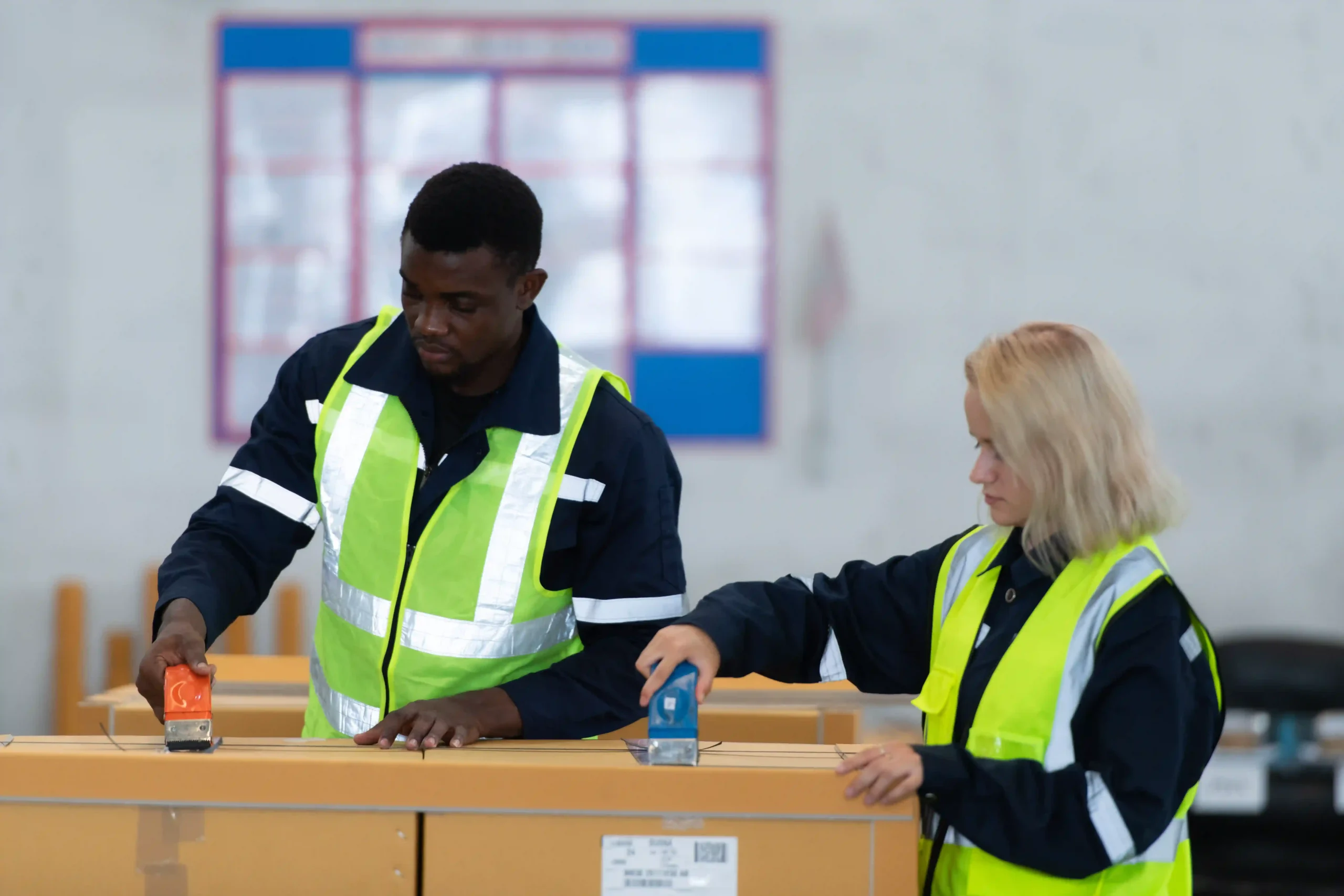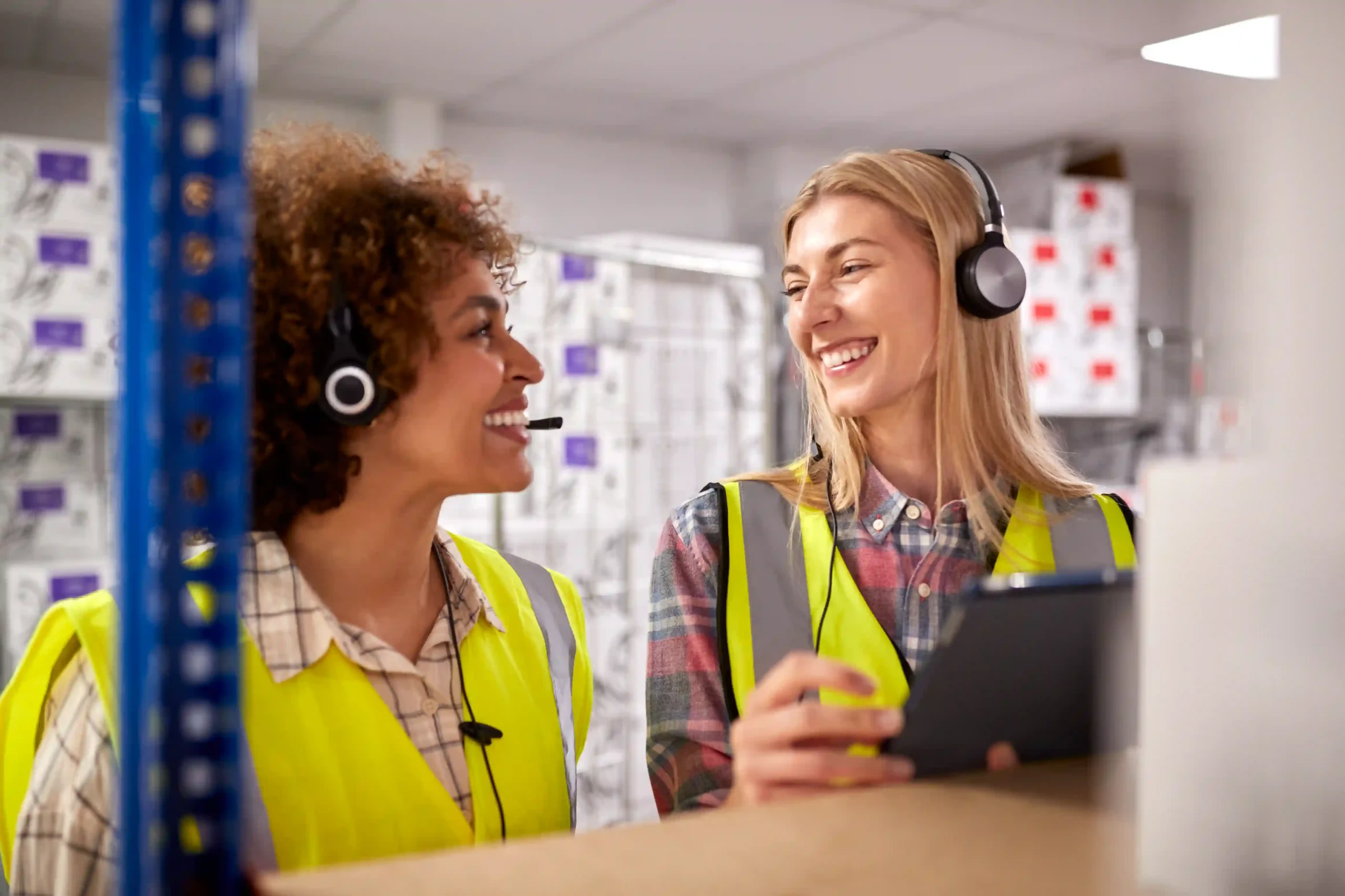In simple terms, 3PL customer service refers to the support and communication you receive from your third-party logistics partner. It’s how you reach them when things go wrong.
It’s how they update you when things are going right. And more than anything, it’s how they help keep your customers happy, your operations running, and your brand protected.
At Tri-Link FTZ, we’ve been in the business for over 35 years, and I can tell you this: the quality of a 3PL’s customer service can make or break your fulfillment experience. You might have the most advanced warehouse, fastest shipping times, and best freight rates, but if you can’t get answers when you need them—or worse, if your customers are left in the dark—those wins don’t mean much.
Good customer service keeps your supply chain stable and your stress levels low.

Over the decades, I’ve worked with companies of all sizes—from early-stage startups just getting their first inventory shipment, to multi-million-dollar brands distributing nationwide through retail and ecommerce. One pattern always holds: the companies that grow the fastest are the ones that partner with 3PLs who act like an extension of their internal team.
That’s only possible when the 3PL customer service is top-tier. When your 3PL is communicative, proactive, and knowledgeable, you feel like you’ve got backup.
Issues get resolved quickly, packages move on time, and your customers get what they ordered—without delays or excuses. It’s especially critical in peak seasons or flash sale periods, where one delayed shipment could mean dozens of angry reviews and lost revenue.
On the flip side, poor 3PL service causes confusion, missed updates, and spiraling issues. I’ve seen businesses come to us in crisis mode, burned by a previous provider who disappeared the moment things got hard.
That kind of stress is avoidable when you prioritize service from the beginning.
A lot of companies will tell you they offer “excellent customer service,” but what does that actually look like? At Tri-Link FTZ, we define great 3PL customer service as fast, human, and tailored.
That means real people—not bots—picking up your calls. It means clear escalation paths when things go wrong. And it means a team that’s trained to understand your business, not just logistics in general.
For example, we assign dedicated account managers who not only know your shipping preferences but also anticipate issues before they happen. We’ve built custom dashboards for clients who wanted better visibility across multiple sales channels.
We’ve even had warehouse teams walk pallets through closing docks just to make last-minute carrier pickups. That’s not out of scope for us—that’s just good service.
Here’s what we believe should always be included in excellent 3PL support:
You don’t want to chase your 3PL. You want a partner who keeps you in the loop before you even ask.
When you outsource fulfillment, you’re trusting a third party to deliver your product, protect your reputation, and represent your brand. That’s no small thing.
And while systems and tech matter, 3PL customer service is the glue that holds everything together. I remember one client in the food and beverage space who was about to launch a new seasonal product line.
The packaging arrived late, and the inventory was backlogged. With daily calls between our team and theirs, we were able to re-prioritize order picking, rearrange warehouse flows, and still hit their go-live date.
Without our service team stepping in fast, the client would’ve lost thousands in missed launch sales. Instead, they sold out in 48 hours. That’s the difference great service makes: smoother operations, happier customers, and fewer fires to put out.
When your 3PL drops the ball on service, it can feel like a domino effect. Your team spends hours chasing updates.
Your customer service team gets swamped with “Where’s my order?” messages. Reviews turn negative.
Refunds go up. Your team loses faith in the supply chain—and so do your customers.
The takeaway here? Don’t just judge a 3PL by their software or facility tour.
Judge them by how they show up for you when things don’t go according to plan.

Evaluating a 3PL’s customer service before you start working with them is tricky—but not impossible. We always tell new clients to “test the team before you test the tech.”
How responsive are they during your discovery calls? Are they willing to introduce you to their service staff?
Can they share response time data or escalation examples? A good 3PL should be transparent about their processes, staffing, and service-level expectations.
Ask about onboarding timelines. Find out how they handle urgent orders or after-hours support.
Don’t be afraid to request a trial run or visit the warehouse to meet the team face-to-face. We’ve earned our reputation because we don’t overpromise during sales calls—we let our service speak for itself.
We even invite prospects to speak with our current clients. Because if your logistics provider can’t back up their claims with real examples and references, that’s a red flag.
Here are a few service-related questions you should always ask:
I’ve seen it firsthand—poor 3PL customer service can quietly bleed your business dry. One client came to us after months of missed inventory updates and zero replies from their previous 3PL’s support team.
Their orders were going out late, mislabeled, or sometimes not at all. Their team had to manually track down every shipment and resend half of them at their own expense.
Worse, they were losing long-time customers who had once trusted their brand. When you don’t have a responsive logistics partner, the damage creeps in slowly.
You’re spending more time fixing problems than growing your business. Customer complaints increase.
Your in-house team starts to feel like they’re doing the 3PL’s job. Eventually, even simple tasks like managing returns or checking inventory levels become a nightmare.
From my experience, most business owners blame themselves first. They think, “Maybe I didn’t give clear instructions,” or “Maybe this is just how fulfillment works.”
But no—3PL customer service should be proactive, accessible, and fully integrated with your needs. Anything less is a liability. Read more here.
Let me share a few examples that still make me proud. One of our health & wellness clients launched a limited edition product ahead of a major influencer campaign.
The catch? Their product arrived four days late, and the influencer post was going live in two.
Our service team stepped in immediately. We reprioritized inbound receiving, ran a night shift to pick and pack the campaign orders, and got everything out the door with time to spare.
The campaign hit over $300,000 in sales, and the client didn’t miss a beat. In another case, a growing fashion brand had just switched to us from a different provider.
They were used to getting email replies after 48 hours—if they were lucky. When they experienced their first Black Friday with us, our support team was ready.
They had real-time tracking dashboards, rapid inventory adjustments, and daily syncs scheduled with the brand. The CEO told me later, “That was the first Black Friday I actually enjoyed.”
That’s the goal—3PL customer service should feel like a real-time partnership, not a long-distance relationship.

A strong support team is important, but they’re only as good as the tools they’re given. One of the ways we’ve consistently improved our service is by investing in platforms that give both our team and our clients real-time insights.
We use a centralized dashboard that combines inventory levels, order status, returns, and performance metrics. Our clients can log in anytime and get the answers they need—without sending emails or making calls.
This dashboard connects to their ecommerce platforms and POS systems, ensuring everything stays updated in real time. We also integrate with leading CRM and ticketing tools so that every request is logged, tracked, and resolved with clear accountability.
And we offer custom alert setups, so if an order is delayed or a SKU runs low, our clients know before it becomes a problem. Here’s a quick overview of the tools we believe every 3PL should be using:
Tool Type | Purpose |
Inventory Dashboard | Tracks stock levels, velocity, restocks |
CRM/Ticket System | Ensures quick and accountable communication |
Returns Management | Makes returns seamless for customers |
Multi-channel Sync | Keeps Shopify, Amazon, etc., updated |
Reporting Tools | Shows trends, errors, and growth ops |
Technology doesn’t replace people—but it makes people more effective. When your 3PL uses modern tools, they solve issues faster, communicate better, and give you the visibility you deserve. Read more here.
Once you’re working with a 3PL, how do you make sure their service stays high-quality? This is where many brands drop the ball.
The truth is, if you don’t hold your 3PL accountable, they won’t hold themselves accountable either. From day one, we establish service-level agreements (SLAs) that cover response times, resolution timeframes, and issue tracking.
We send monthly reports that cover key performance metrics—error rates, on-time shipments, return reasons, and customer complaints. If there’s a problem, it’s discussed, documented, and resolved.
We also encourage our clients to schedule regular reviews. Whether it’s monthly, quarterly, or every peak season, these reviews allow us to recalibrate, address concerns, and improve together.
We look at the data, the wins, the missteps—and we make a plan. That’s how relationships stay strong in logistics.
Here’s what you should expect in terms of accountability:
You’re not being “difficult” by asking for accountability. You’re being smart.
If your current provider isn’t delivering, don’t stay stuck. I’ve helped dozens of clients make a smooth switch, and while it can seem daunting, it’s usually easier than staying in a bad relationship.
Start by auditing your current 3PL’s service breakdowns. Where have they failed you?
Late orders? Poor communication?
Lack of data? Use that list to create a checklist for your new provider.
Ask tough questions up front. Look for a partner who can walk the walk—not just talk the talk.
At Tri-Link FTZ, we walk new clients through a step-by-step onboarding roadmap. We start with integration planning, inventory transfer logistics, and service setup.
Then we build custom dashboards, sync communication platforms, and run parallel order tests to catch any gaps before launch. If your business is growing—or even just surviving—you deserve a partner who will support that growth, not stall it.
And 3PL customer service is the difference.
After 35 years in this business, I’ve seen logistics change a lot. Automation, AI, and same-day delivery are all evolving fast.
But the one thing that hasn’t changed is the value of human connection in service. And that’s exactly what great 3PL customer service delivers: peace of mind, performance you can trust, and a team you can actually talk to.
If you’re currently managing the stress of missed deadlines, poor visibility, or silent partners, know that it doesn’t have to be this way. You deserve better.
Your team deserves better. Your customers definitely deserve better.
So, if you’re ready to work with a 3PL that understands both the logistics and the human side of fulfillment, reach out to us at Tri-Link FTZ. We’d be happy to show you what next-level service really feels like.
Share this article
We have other resources available upon request as well as one-on-one support and personalized answers, just like our services.
Simply contact us anytime and we’ll get back to you to answer your questions and provide meaningful answers that show you how Tri-Link supports your logistics, reduces costs, and accelerates efficiency.
Tri-Link delivers exceptional FTZ and 3PL services tailored to your global trade needs.
Our solutions combine innovation, quality, and efficiency to exceed your expectations and meet your specific requirements.